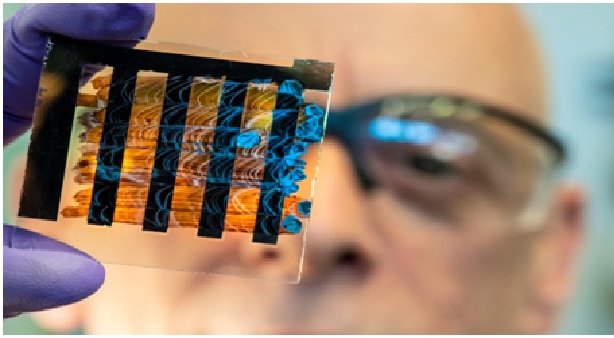HPC helps identify new, cleaner source for white light
When early humans learned to use fire, they were able to fight back against the darkness of the night that enveloped them. With the invention and widespread use of electricity, it became easier to separate heat from light, work at night, and light train cars on highways. In recent years, older forms of electric light generation such as halogen bulbs have given way to more energy efficient alternatives, making it even cheaper to light our homes, workplaces and life in general. [1]

Figure 1. HPC helps identify new, cleaner source for white light
Figure 1 shows unfortunately, however, white light generation by newer technologies such as light-emitting diodes (LEDs) is not straightforward and often relies on a category of materials called “rare-earth metals,” which are increasingly scarce. This has recently led scientists to look for ways to produce white light more sustainably. Researchers at Giessen University, the University of Marburg, and Karlsruhe Institute of Technology have recently uncovered a new class of material called a “cluster glass” that shows great potential for replacing LEDs in many applications. [2]
Clear view of cluster glass formation
If you’re not a materials scientist or a chemist, the word glass might just mean the clear, solid material in windows or on your dinner table. Glass is actually a class of materials that are considered “amorphous solids”; that is, they do not have an ordered crystal lattice, often due to a rapid cooling process. At the atomic level, its constituent particles are in a suspended and disordered state. Unlike crystal materials, where the particles are ordered and symmetrical over a long molecular distance, the disorder of glasses at the molecular level makes them excellent at bending, fragmenting or reflecting light. [3]
HPC expedites R&D timelines
HPC plays a major role in helping researchers accelerate the timeline between new discovery and new product or technology. Sanna explained that HPC drastically cut down on the time to get a better understanding of cluster glass. "We spend a lot of time doing simulation, but it is much less than characterizing these materials in reality," he said. "The clusters we model have a diamond-shaped core with 4 ligands (molecular chains) attached to it. Those ligands can be made of any number of things, so doing this in an experiment is time consuming."
In ongoing studies of cluster glass Sanna's team hopes to thoroughly understand the origin of its light generating properties. This could help to identify additional new materials and to determine how best to apply cluster glass in light generation.
Sanna explained that HPC resources at HLRS were essential for his team's basic science research, which he hopes will lead to new products that can benefit society. [4]
References:
- https://journalbreak.com/hpc-helps-identify-new-cleaner-source-for-white-light/
- https://vervetimes.com/identifying-a-new-cleaner-source-for-white-light/
- https://latest.worabia.com/hpc-helps-identify-a-new-cleaner-source-of-white-light/205139/
- https://www.sciencedaily.com/releases/2022/08/220816093614.htm
Cite this article:
Thanusri swetha J (2022), HPC helps identify new, cleaner source for white light, Anatechmaz, pp. 408

